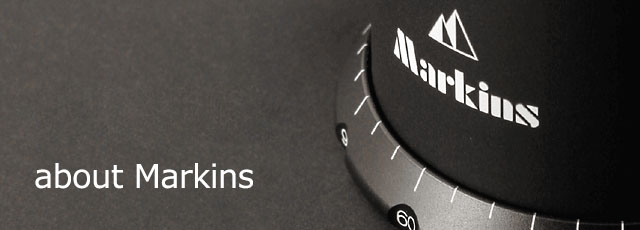Visit birding spots in the western United States
January 12, 2019
Photographer / Koji Nakano
At the end of last year, I flew to the American West to photograph wild birds living in a majestic landscape. When it comes to bird photography, a large system combining a high-end SLR camera with a 500mm F4 or 600mm F4 was mainstream, but in recent years, equipment has become more compact. In particular, the AF-S NIKKOR 500mm f/5.6E PF ED VR lens released by Nikon has the focal length required for bird photography, but it weighs about 1.5 kg, which is so light that it overturns the conventional wisdom of super telephoto lenses.
When I think back, the last time I felt such a weight reduction in equipment was when I came across the Markins Q20iQ-BK/BV-22 head a few years ago. Until then, a large tripod head was necessary to support a heavy super telephoto lens, but the Markins tripod head was small and lightweight and could easily support the weight of the super telephoto lens. The weight of the super telephoto lens and the tripod head, which are inevitably heavy, have brought about a revolutionary change in bird photography.
When photographing wild birds overseas, the choice of equipment to bring with you is always a headache. The majority of your carry-on luggage is taken up by your photography equipment, so choosing the necessary equipment so that you do not exceed the baggage weight limit when boarding an airplane can be considered a kind of technique. Of course, you don't want to compromise on the shooting site, so you want to choose the best equipment that meets the weight limit. The photography equipment I brought with me this time included two Nikon cameras, a Nikon D850 and a Nikon Z7, and four lenses: the AF-S NIKKOR 500mm f/5.6E PF ED VR, the AF-S NIKKOR 300mm f/4E PF ED VR, the AF-S NIKKOR 70-200mm f/4G ED VR, and the NIKKOR Z 24-70mm f/4 S. The tripod is a Gitzo GT2542 with the tripod hub replaced with a TH-230, and the head is a Markins Q20iQ-BK/BV-24 with a PB-10 pan bar. With this setup, you should be able to achieve the best results with the minimum amount of equipment.
When I think back, the last time I felt such a weight reduction in equipment was when I came across the Markins Q20iQ-BK/BV-22 head a few years ago. Until then, a large tripod head was necessary to support a heavy super telephoto lens, but the Markins tripod head was small and lightweight and could easily support the weight of the super telephoto lens. The weight of the super telephoto lens and the tripod head, which are inevitably heavy, have brought about a revolutionary change in bird photography.
When photographing wild birds overseas, the choice of equipment to bring with you is always a headache. The majority of your carry-on luggage is taken up by your photography equipment, so choosing the necessary equipment so that you do not exceed the baggage weight limit when boarding an airplane can be considered a kind of technique. Of course, you don't want to compromise on the shooting site, so you want to choose the best equipment that meets the weight limit. The photography equipment I brought with me this time included two Nikon cameras, a Nikon D850 and a Nikon Z7, and four lenses: the AF-S NIKKOR 500mm f/5.6E PF ED VR, the AF-S NIKKOR 300mm f/4E PF ED VR, the AF-S NIKKOR 70-200mm f/4G ED VR, and the NIKKOR Z 24-70mm f/4 S. The tripod is a Gitzo GT2542 with the tripod hub replaced with a TH-230, and the head is a Markins Q20iQ-BK/BV-24 with a PB-10 pan bar. With this setup, you should be able to achieve the best results with the minimum amount of equipment.
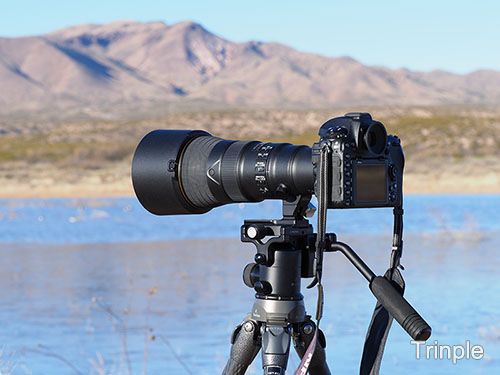
For this assignment, I visited several bird-watching sites in New Mexico and California in the western United States. I observed around 100 species of wild birds, mainly flocks of wintering snow geese and sandhill cranes, and photographed several dozen of them. Before photographing wild birds, it is important to know the identity of the target species and their basic ecology, so when I arrived at the site, I first observed the birds with binoculars and a telescope and recorded their behavior in a field notebook. Through these observations, I was able to determine what birds were in the area, what their behavior was, and which scenes would be the best opportunities to take a photo. Of course, I also checked the lighting conditions at different times of the day and their position relative to the background. It is no exaggeration to say that this advance research and location scouting determines the outcome of the shoot.
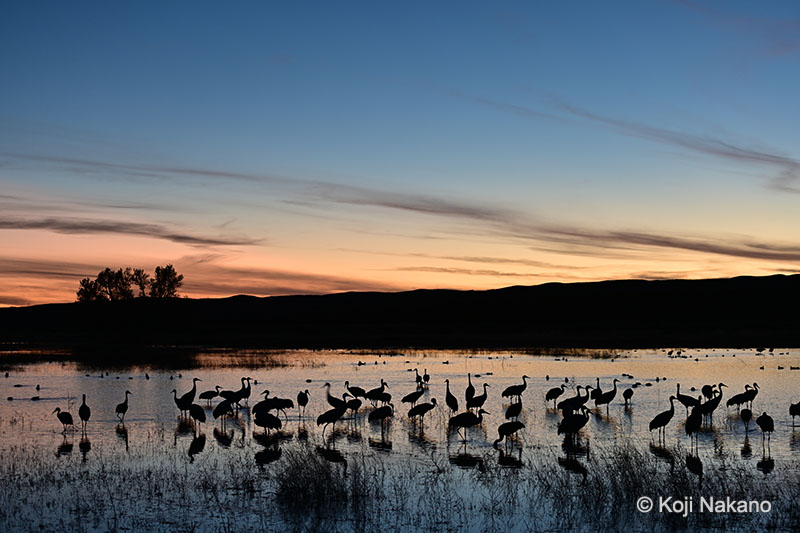
The actual shooting location and time are decided based on prior research. Birds take off and land facing into the wind, so when photographing them in flight, it is necessary to always be aware of the wind direction. The main equipment used this time was a Nikon D850 and an AF-S NIKKOR 500mm f/5.6E PF ED VR, with a system weight of approximately 2.5 kg. The tripod mount of the 500mm lens has been converted to an Arca-Swiss compatible type, so it can be mounted directly on the Markins Q20iQ-BK/BV-24 head without the need for a plate. The Q20iQ-BK/BV-24 has such a strong holding power that it doesn't budge even when carrying a Nikon D5 and a gigantic 800mm f/5.6 lens (system weight approx. 6kg), so it should be able to handle the lightweight and compact equipment used this time with ease. In fact, I photographed wild birds in a variety of scenes, including snow geese and sandhill cranes, as well as white-streaked sparrows and red-crowned quails in the forest, and I was able to get the results I expected without any camera shake.
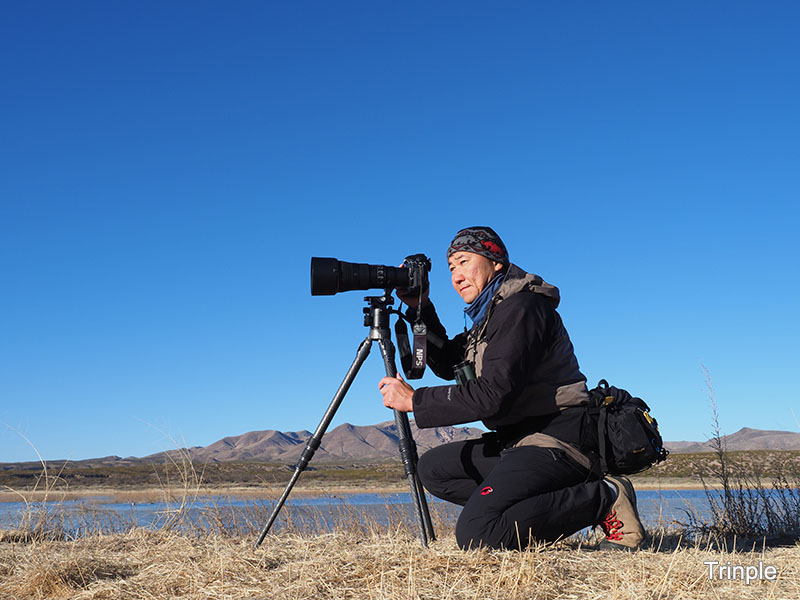
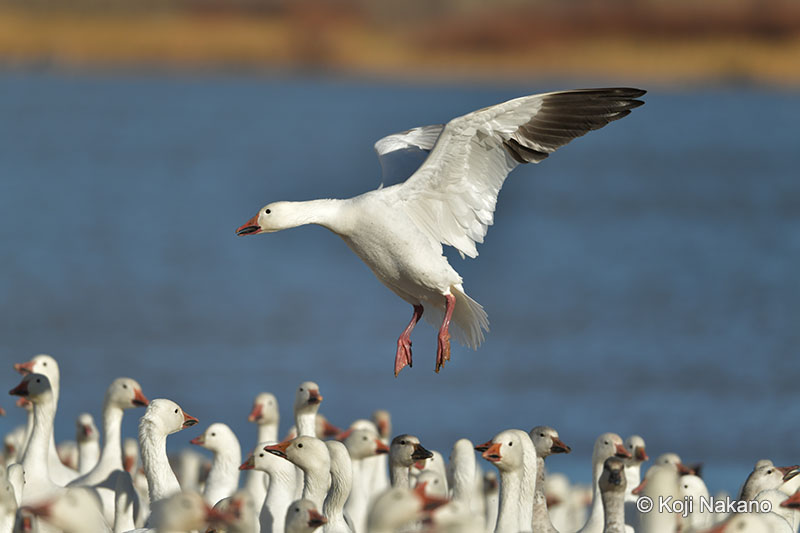

Koji Nakano
Born in 1972. Specializes in photographing wild birds and airplanes, with work published mainly in magazines and advertisements. Travels around Japan and overseas in pursuit of two major themes: "Birdscape - Landscapes with birds" and "Jetscape - Landscapes with airplanes flying." Recent publications include "Techniques for photographing wild birds with a digital camera" (Seibundo Shinkosha) and "Digital camera airplane photography techniques" (AstroArts).
Member of the Japan Professional Photographers Society
URL : www.strix-photography.com




